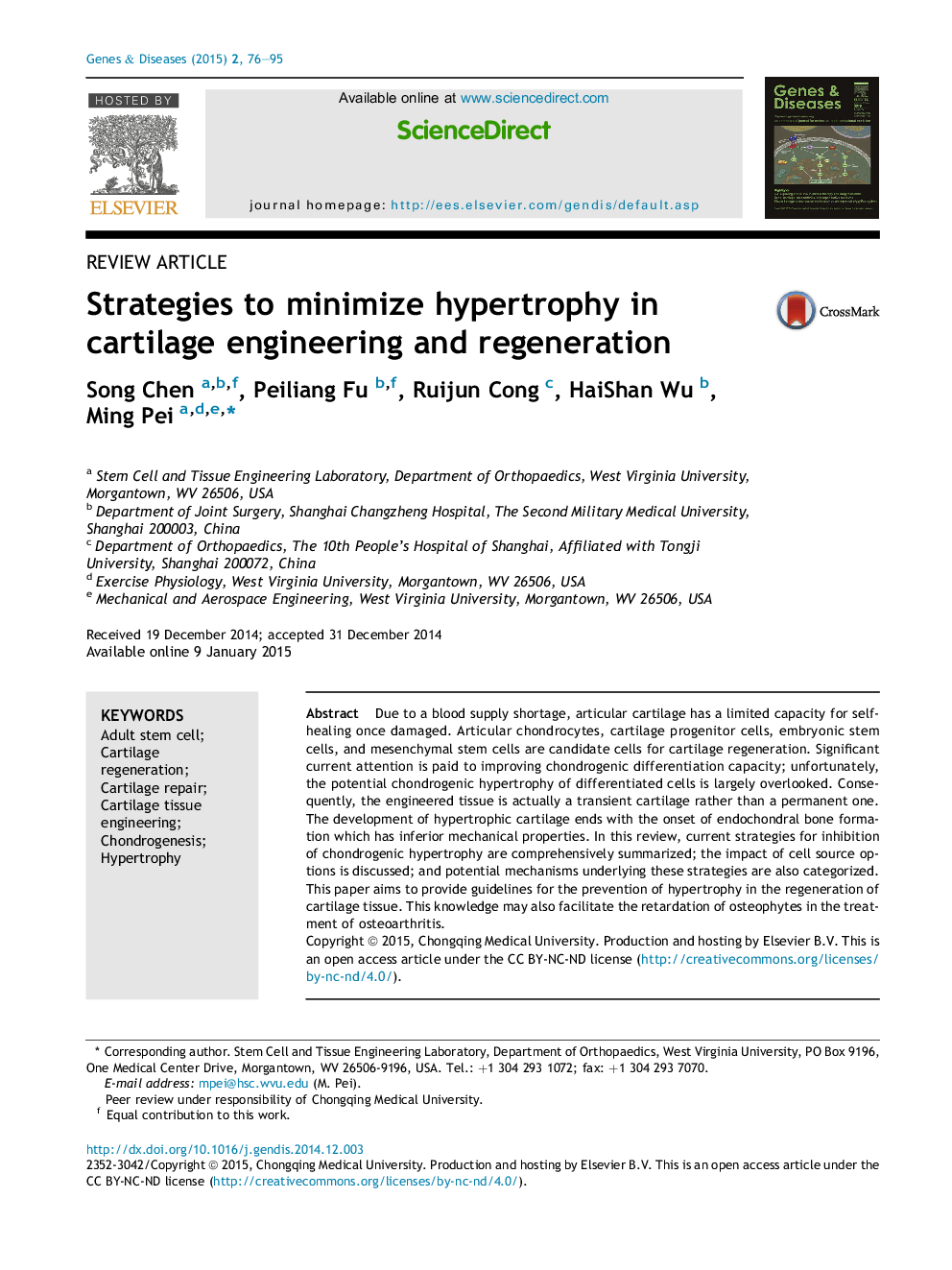| Article ID | Journal | Published Year | Pages | File Type |
|---|---|---|---|---|
| 2182638 | Genes & Diseases | 2015 | 20 Pages |
Due to a blood supply shortage, articular cartilage has a limited capacity for self-healing once damaged. Articular chondrocytes, cartilage progenitor cells, embryonic stem cells, and mesenchymal stem cells are candidate cells for cartilage regeneration. Significant current attention is paid to improving chondrogenic differentiation capacity; unfortunately, the potential chondrogenic hypertrophy of differentiated cells is largely overlooked. Consequently, the engineered tissue is actually a transient cartilage rather than a permanent one. The development of hypertrophic cartilage ends with the onset of endochondral bone formation which has inferior mechanical properties. In this review, current strategies for inhibition of chondrogenic hypertrophy are comprehensively summarized; the impact of cell source options is discussed; and potential mechanisms underlying these strategies are also categorized. This paper aims to provide guidelines for the prevention of hypertrophy in the regeneration of cartilage tissue. This knowledge may also facilitate the retardation of osteophytes in the treatment of osteoarthritis.
